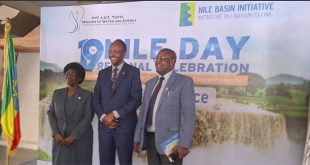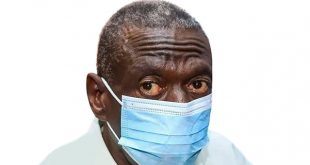
By Rukiya Makuma
Independence babies that wont grow up
2010 is the year for Africa as 17 countries celebrate 50 years of independence since colonial rule. Africans resisted the colonialists on grounds of segregation, slavery, exploitation and domination. But 50 years after, how have these countries performed? Are they still languishing from the post colonial effects or is there a new state in place?
Despite some progress, African countries still struggle with development and human rights issues and the responsible governments in power have done nothing to change the situation at hand..
Despite much progress, Ghana still faces significant development challenges, particularly in rural areas. 45 percent of the population live on less than $1 a day and 79 percent on less than $2 a day.

60 percent of Somalia’s population lives below the $1 per day poverty line. In 2009, an estimated 40 percent of the population was in need of humanitarian assistance. Human development indicators are uniformly low; Somalia has the worst health indicators in Africa with less than 0.5 doctors and two nurses per 100,000 people. Public service delivery is rudimentary in Somaliland and Puntland, and non-existent elsewhere. Where health and education services are provided by NGOs or UN agencies they are mainly operated by community-based local authorities. Providing development assistance to a needy country in the absence of functioning public institutions is a particular challenge. The UN leads with a humanitarian and development programme based in Nairobi.
Currently Somalia is regarded as a failed state with a weak, but recognised central government authority, which is known as the Transitional Federal Government (TFG). The TFG only controls the central region of the country.
Congo is one of the most urbanised countries in Africa, with over 66 percent of the population living in Brazzaville, Pointe Noire or towns along the railway. Approximately 70 percent of the population live in poverty. Congo was ranked 139 out of 177 countries in the 2007 UNDP Human Development Index. Life expectancy is 52.8 years and 49 percent of the population do not have access to an improved water source. Infant mortality rates are estimated at 93.86 deaths per 1,000 live births. In 2003 the adult HIV infection rate was estimated at 4.9%, with 100,000 deaths from the disease in the same year. Congo used to have one of the most developed education systems in Africa, reflecting its historic role as the capital of French Equatorial Africa. But, primary education attendance dropped from 90 percent in 1990 to 40 percent in 2000, though 83.8 percent of the population were estimated to be literate. The civil war caused huge social disruption, when an estimated 35% of the population were displaced. Social services suffered accordingly.

Burkina Faso suffers from very widespread and severe poverty. The World Bank ranked Burkina Faso as the 13th poorest country in the world in 2002. The UNDP’s 2005 Human Development Index ranked it at 175 out of 177 countries. Although modest improvements have been recorded in the socio-economic indicators, they remain low. Primary school enrolment improved from 26 percent in 1990/91 to 35 percent in 2002. (This compares with the average for sub-Saharan Africa of 59 percent.) But secondary school enrolment is very poor at only 8 percent in 2001/02. Health indicators are also poor. Life expectancy is 47.5 years.
South Africa is still struggling with issues of racial discrimination, something they fought so hard during the colonial days.
Apart from Ghana and South Africa, most of the countries have not done well with regard to human rights issue. Somalia’s human rights record is very poor and to reflect this, it remains a country of concern in the Foreign and Commonwealth Office’s ‘Human Rights Report’. Somalis live largely without the protection of the state, access to security or institutional rule of law. As a result of the ongoing conflict and violence in the South of the country, there are more than 1.5 million internally displaced persons. An estimated 40 percent of the population were in need of relief assistance in 2009 – the largest proportion of the population requiring relief of any country in the world.

In Congo and Libya the independent press lacks freedom and faces greater control by the state. In Libya the government only occasionally blocks web sites critical of the regime, which are numerous in Libya.
Most of the countries have done little to improve their economies, their health sectors, avenues of corruption, unproductive education systems; poor delivery of services, unending political turmoil and development is only visible in the urban areas. All this does not portray a good image to the world, and until these issues are solved by some countries that will be celebrating 50 years of independence in the next five years, there is no cause for jubilation.
Ghana
Ghana was the first sub-Saharan country in colonial Africa to gain its independence on March 6, 1957. 2008 estimates show that the country has a populatio
n of 23,328,000 and occupies 239,000 area sq km. Ghana is a member of  the Commonwealth, United Nations (UN), Economic Community of West African States (ECOWAS), and African Union (AU).

The economy’s GDP, according to 2008 estimates, is US$17.72bn with an annual growth of 6.3 percent and an inflation of 16.4 percent. Its major indust
ries are cocoa, timber, and gold, which dominates the mining sector and contributes to 30 percent of its foreign exchange earnings. Ghana’s major trading partners are The European Union, United States, Nigeria and Togo.
Ghana is the UK’s fourth largest export market in Africa and was valued at £259 million in 2009, up from £155.04m in 2006. UK imports from Ghana were £189 million in 2009, up from £148.8m in 2006.
Somalia
The Somali Democratic Republic received its independence from Italy on July 1, 1960 when they joined with their northern neighbour, Somaliland, who had gained independence from the British on June 26, 1960. Somalia currently occupies 637,657 area sq km and has a population of 9.1 million (2009 UN mid year estimate).
Somalia’s GDP is $5.733 billion with an annual growth of 2.6 percent (2009 estimate). Major industries include agriculture – livestock, bananas and hides and skins continue to be the principal exports. The Arabian Peninsula, particularly the United Arab Emirates, Ethiopia (for Somaliland) and Yemen are its major trading partners. UK Exports of goods to Somalia are estimated at £1.37 million (2008) – mainly power generating equipment and machinery (£518,000), road vehicles (£278,000) and professional scientific controlling instruments (£257,000). UK Imports of goods from Somalia total £40,000 (2008).

Somalia’s economy operates in the absence of public sector management or regulation and without any formal economic or monetary policies. There is nonetheless a vibrant informal economy largely based on trans-national trade and livestock. About 50% of the population are pastoral. The urban private sector is also strong, especially in services such as telecommunications. Commercial infrastructure and institutions are functional and relatively sophisticated.
Democratic Republic of Congo
ON June 30, 2010, the Democratic Republic of Congo (DRC) celebrated 50 years of independence, marking a turning point for the large central African state that has known no peace since being liberated from Belgian control. The country covers an area of 342,000 sq km (132,000 sq miles) and has a population of 4.01 million (2009 estimates). It’s a member of African Development Bank (AFDB), Central African Economic and Monetary Community (CEMAC), United Nations (UN), African Union (AU), Economic Community of Central African States (ECCAS).
The country’s GDP is US$8.7 billion with an annual growth of 6.6% (2009 estimates) and an inflation of 6% (2008 estimates). Its major industries are petroleum, timber, phosphates, natural gas, coffee, sugar and its major trading partners are France, US, Belgium, Italy, Germany, Taiwan and China. UK exports to Republic of Congo were worth £26.89 million in 2006. Congo’s exports to the UK in 2006 were worth £9.74 million.
The economy remains dependent on oil, although production peaked in 2000 at 283,000 barrels per day (BPD) – at which point oil accounted for 95% of exports. Timber also forms a significant source of the country’s exports.
In the 2008 Report on the Global AIDS Epidemic the UNAIDS/WHO Working Group estimated that around 73,000 adults aged 15 or over in Congo were living with HIV; the prevalence rate was estimated at around 3.5% of the adult population (in comparison, Â the prevalence rate in adults in the UK is around 0.2%). Â
South Africa
South Africa united into one independent country on May 31, 1910. It covers an area of 1,228,376 sq km and has a population of 48.7 million (estimates mid-2008). It’s a member of United Nations (UN), African Union (AU), Commonwealth, Non Aligned Movement (NAM), and Southern African Development Community (SADC).
The GDP of the economy is US$276.5 billion with an annual growth of 3.1% (2008 estimate) and an annual inflation of 8.6% (February 2009). Its major industries are mining (world’s largest producer of platinum, gold, chromium), automobile assembly, machinery, textile, iron & steel, chemicals, fertiliser, foodstuffs; financial services; manufacturing; wholesale & retail trade; transport, storage & communication. South Africa’s major trading partners are the US, Germany, Japan and the UK, which shares an £8 billion two-way trade in goods and services with South Africa.
In part, South Africa has a sophisticated economy based on manufacturing, mining and financial services, in which macro-economic indicators like interest rates and the strength of the Rand are critical. But it also has an economy consisting of the very poor who eke out a living through near-subsistence agriculture or in the informal sector, for which economic statistics mean little. Unemployment levels are officially 23.5% (March 2009).
Libya
Libya received its independence on December 1st 1951. It has a population of 6 million, a GDP of $51 billion and GDP per capita of $8, 470. It spreads across 1,759,540 sq km.
Libya is an absolute dictatorship under the control of Col. Muammar el-Qaddafi since September 1969. There are no elections and no political parties, and the state derives its ideology from Qaddafi’s Green Book, a collection of his sayings and philosophies loosely based on an amalgam of socialism, economics, Islamic law and Qaddafi’s idea of socio-anthropology
Oil and gas account for 95 percent of Libya’s export revenue, 75 percent of its government revenue and 30 percent of the country’s total economic output. Agriculture accounts for 18 percent of Libya’s economy, but the country must import most of its food. Gypsum, iron ore, potassium, magnesium, sulfur and phosphate mining, iron, steel and construction, account for other shares of the economy. Most of the economy is nationalized. Tourism is growing rapidly.
Burkina Faso
Burkina Faso received independence from France in August 1960. The country covers 274,190 sq km and has a population of 15.02 million (2008 United Nations estimate). Its a member of the UN, African Union (AU), Economic Community of West African States (ECOWAS), the overlapping Economic and Monetary Union of West Africa (UEMOA), Organisation de la Francophonie (OIF), Organisation of Islamic Conference (OIC), Community of Sahel and Saharan States (COMESSA, or CENSAD).
It has a GDP per capita of US$1,300 with an annual growth of 5.1 percent and an inflation of 7.3 percent (2008 estimates). Its major industries are cotton (contributing 69% of all export earnings in 2004, livestock, which contributes an estimated 12 percent of export earnings, and gold. Its major trading partners are France, Singapore, China, Cote d Ivoire and Togo. The economy depends overwhelmingly on agriculture, whose performance depends on the vagaries of the weather and world prices. Over 90% of the population live off agriculture and animal husbandry.
The return of many thousands of Burkinabe from Cote d’Ivoire since the outbreak of civil war there has put intense pressure on an already weak economy, pushing up unemployment.
 The Independent Uganda: You get the Truth we Pay the Price
The Independent Uganda: You get the Truth we Pay the Price


